2002
TES3: Morrowind Wiki
2015-03-08-16:10
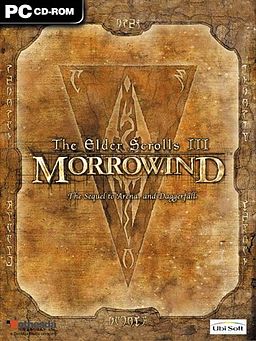
Read the full Article here: http://en.wikipedia.org/wiki/The_Elder_Scrolls_III:_Morrowind
The Elder Scrolls III: Morrowind is an open world fantasy action role-playing video game developed by Bethesda Game Studios, and published by Bethesda Softworks and Ubisoft. It is the third installment in The Elder Scrolls series of games, following The Elder Scrolls II: Daggerfall, and preceding The Elder Scrolls IV: Oblivion. It was released in North America in 2002 for Microsoft Windows and the Xbox. Well-received publicly and critically, with over four million sales[3] and more than 60 awards (including Game of the Year),[4] the game spawned two expansion packs for the PC: Tribunal and Bloodmoon. Both were eventually repackaged into a full set containing all three, Morrowind: Game of the Year Edition, which shipped on October 30, 2003, for both PC and Xbox.[5]
The main story takes place on Vvardenfell, an island in the Dunmer province of Morrowind, which lies in the empire of Tamriel and is far from the more civilized lands to the west and south that typified Daggerfall and Arena. The central quests concern the deity Dagoth Ur, housed within the volcanic Red Mountain, who seeks to gain power and break Morrowind free from Imperialreign.[6][7][8] Morrowind was designed with an open-ended free-form style of gameplay in mind, with less of an emphasis on the game's main plot than its predecessors. This choice received mixed reviews in the gaming press, though such feelings were tempered by reviewers' appreciation of Morrowind ' s expansive and detailed game world.
[..clip..]
Free-form design[edit]
Morrowind, following the tradition established by its predecessors in The Elder Scrolls series,[22] attempts to establish a completely free-form world, with little constricting boundaries on the player's actions. From the beginning of the game, players are put in a world where they are left to roam, steal, quest and explore, without necessarily following the main quest.[23] Lead Designer Ken Rolston, asked prior to Morrowind ' s release what he thought were the "core, untouchable design elements" of the Elder Scrolls series which "set them apart from other games", responded immediately: "Free-form experience."[24] In Rolston's view, the game's central plot is a chance to introduce the player to a cross-current of conflicting factions, background themes, and to the characters of the game, rather than the primary focus of the player's experience.[25] "Every TES game has to let you create the kind of character you want, and then do the things you want. We would never have a TES RPG force you to be a certain character or go down a certain path."[24]
To allow for this behavior, Morrowind, in addition to creating an extensive main quest, provides detailed discursive quests for a variety of factions, including various guilds, religious organizations and aristocratic houses, in addition to side-quests found by mere exploration.[26][27] Even the main plot itself may be undertaken in a number of ways. There are, in the words of critic Craig Lindley, "a very specific set of central plot points within this main plot. But the plot points are partially ordered: seven high level tasks must be completed, but their constituent sub-tasks...can be accomplished in any order, and this is repeated for the sub-tasks involved in those sub-tasks." The choices the player makes in their performance of these tasks thus become methods of character interpretation; a set of dramatic tools establishing the player's newly created self-identity.[28]
According to Gamasutra's Matt Barton, some have argued that these changes put Morrowind closer in spirit to the original Dungeons & Dragons tabletop game, where players take a more creative role in their play, and where players are left to decide for themselves the "right" action.[29] This is a view paralleled by Rolston, who has stated that "The goal of every TES game is to create something that resembles a pen and paper RPG on the computer."[24] The sheer number of quest possibilities, combined with what developer Ken Rolston identified as a lack of "narrative urgency", left many critics dissatisfied with the main plot. Ken Rolston later stated that the main quest might have been presented with greater force, in the style of the game's successor, The Elder Scrolls IV: Oblivion, without losing the free-form design of the series, but such concerns were not addressed prior to Morrowind ' s release.[30]
[..clip..]
Reception[edit]
The Elder Scrolls III: Morrowind was well received by critics. It was congratulated most frequently for its breadth of scope, the richness of its visuals, and the freedom it worked into its design. Alongside the compliments, however, came criticism that the game designers had overstretched themselves, leaving glitches in various spots, and made a game too taxing to be run on an average machine, with one reviewer calling it "a resource pig".[59] In a retrospective by 1UP.com, the breadth and open-endedness of Morrowind is suggested to have contributed to the decline of single-player RPGs on home computers by leading customers to MMORPGs, where they could have a similar experience.[80]
In spite of this, reviewers generally felt that the drawbacks of the game were minor in comparison to its strengths. IGN concluded that "Morrowind isn't perfect and its system requirements are huge; but its accomplishments outweigh any reservations."[77] GameSpot's review concluded with a similar summation. "Morrowind does have numerous drawbacks...But they're all generally minor enough that most anyone should be able to look past them...They'll otherwise find that Morrowind fulfills its many ambitious intentions. It's a beautiful-looking, sprawling, and completely open-ended game that allows you to play pretty much however you like”.[60]
[..clip..]
AlienGamer is a donor to Wikipedia Foundation. Are you?
If not, go HERE and put down a donation?
TES3:Morrowind
2015-03-08-15:08
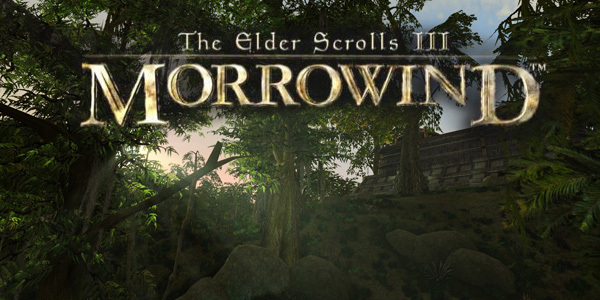
You all heard about Skyrim, right? This particular game is part of a long standing series from Bethesta.
The full name is: ”Elder Scrolls 5: Skyrim”. Before this one there was ”Oblivion”.
Before that we have ”Elder Scrolls 3: Morrowind”. The best game in the series according to many.
But Morrowind is from 2002 and it shows its age. Also the combat is a hot topic
of debate. Some say it is more realistic and less repetative. Others claim it is purly based
on luck and not skill. In fact they are both correct.
But gamers are in luck. Well most of us are. The Elder Scroll series have mostly been built upon a
solid mod foundation. This is one (of many) reason for the long life of the series.
So aging graphics and game mechanics can be corrected. It takes effort and time. But Morrowind
have had both in spades.
So there are alot of mods doing all sorts of things. But the most popular ones improve on sound and
graphics. Quite alot actually. If you put in some time finding and installing the big mods you can make
Skyrim run for its money. Honestly. Morrowind is alot older compared to both Oblivion and Skyrim.
But with mods it can be made to look and sound like you would not believe.
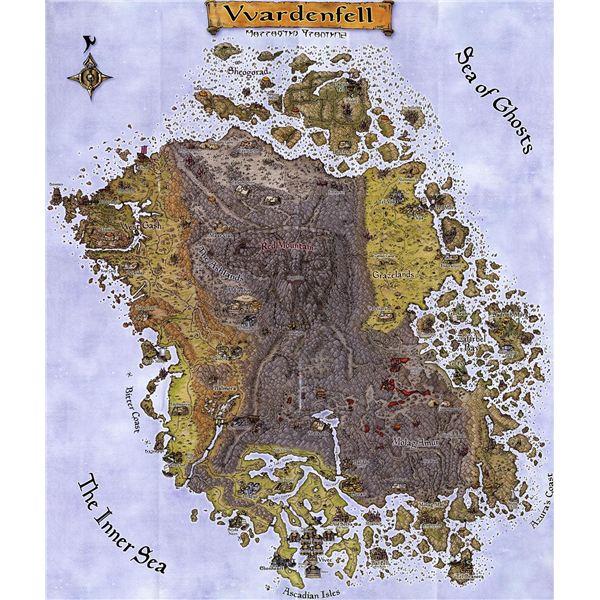
This is the stage on which you are placed in Morrowind. The island of Vvardenfell.
Later expansions added at least one more smaller island to the north.
Some mods add even more.
There are much more land in this province.
But believe me, this quite enough to begin with. There are mods which
try to add the rest but they are not complete. After all it is a HUGE area to begin with.
Also all work is purly fan made.
But the very nature of how Morrowind works as a game makes this island VERY large.
Trust med on this!
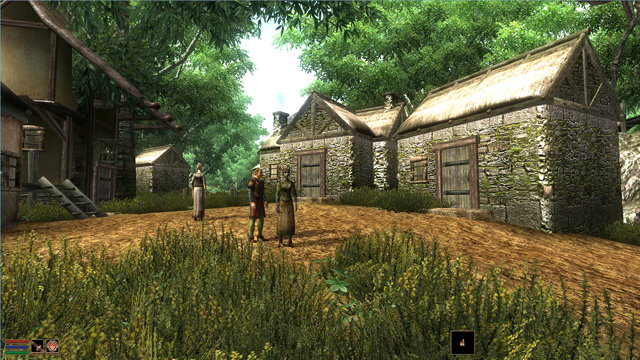
So with mods you can make the game quite the looker.
”Morrowind Graphics and Sound Overhaul” is one of the larger mods.
It is a collection of other smaller modds and extensions.
All aimed at making Morrowind a more modern experience.
Simply adding this package to the game makes an
enormous difference. It like finding the fountain of youth or something.
When I was younger I had a brief encounter with Morrowind.
But as I was not the same person I am today I kind of did not understand the game.
Or what to do in it.
Like all other games in the series this is an open sandbox world.
The player is allowed to go where ever and nearly when ever and in whatever order.
There is a main story, which can be played to an end.
But all the stuff in the between the start and end can easily make you play the game
for hundreds and hundreds of hours. Some people have been returning to Vvardenfell for the last
decade or so. Now that is replayability!
Many will however find that Morrowind is more difficult compared to Oblivion and Skyrim.
Especially if you come directly from Skyrim.
Why? Well, out of all the games (except maybe the first two)
you get a much larger degree of freedom.
But not only that. The game goes out of its way not to hold your hand.
This often comes like a shock to Skyrim players.
The thing about Morrowind is that both combat and dungeon crawling is secondary to exploration.
Finding out about a rich world. A world with living beings in it. Politics and much, much more.
If you can overlook the shortcomings of the game mechanics (or some of them)
Morrowind offers a very large and meaty experience.
The player can expect to find a natural arc in how things work.
This means that you will be VERY, very weak in the beginning.
It also means you have to think before you act.
Learn to walk before you run.
Speaking of running and walking. One of the issues with the game is the speed you move.
With very few exceptions you will find out that you are quite slow in the beginning.
To some players this will probably be a painful experinece.
BUT, this is the cool thing about this game. It changes over time if you stick with it.
So the player will have to get used to being a small time thing in the beginning.
Then the middle part comes along and suddenly things will start to pick up speed.
In every sense of the word. More sub-plots. More quests.
More places to go and much more people to meet.
Even some which are not people at all.
The end game of Morrowind is nothing short of spectacular.
You grow in power like you would not have imagined in the beginning.
You essentially have the potential to become some sort of a deity. Or at least close to it.
Not to mention you will be killing one.
I can not really say more of risk of spoiling the well crafted story of the main quest.
The music is composed, like many other TES games, by Jeremy Soule.
You will find it familiar if you played any of the later games. This is a good thing.
The theme is very nice and forshadows the most excellent soundtrack in Skyrim.
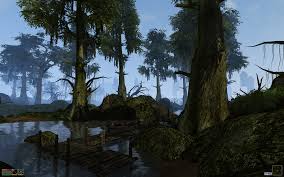
So I’ve decided to take a deep breath and dive into this world.
Yes I know. One more (long time) series is not what I need right now.
But how could I resist?
It will work great as a mirror to Amuens adventures in Skyrim I think.
Also, I want to show of the origin.
Yes there are even older members of the Elder Scrolls saga.
BUT they are very much older (and I quite do not like the way they work).
They are also more primitive and not in the same category (I think)
like the thee latest parts of Elder Scrolls.
I totally ignores the online version. This is like the bastard child of the family.
Everybody knows of its existance but tries to pretend like it never happened
So look forward to this in the future of the channel. I do not exactly know when.
I have already modded the game so I’m ready to start recording any moment now.
It is going to be great!